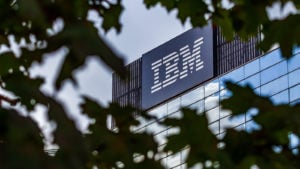Blue-chip stocks are often the bedrock of a conservative investor’s arsenal. While high-flying growth stocks may provide thrilling returns, the allure of stability cannot be overlooked. As the year unfolds, numerous stocks have experienced tumultuous periods. However, such volatility should not discourage investors with prolonged time horizons from considering blue-chip stock investments. The financial flexibility granted over a decade or two makes awaiting market turbulence a manageable endeavor.
Nevertheless, diversification is paramount, and a balanced portfolio embracing both growth stocks and blue chips can be advantageous. Notably, certain blue-chip stocks have managed to embody the characteristics of both stable investments and growth potential. Below, we delve into three such blue-chip stocks that warrant consideration for those seeking long-term financial stability.
The Enduring Resilience of Procter & Gamble (PG)

Amidst the pantheon of corporations renowned for their stability, few can rival the historic resilience of Procter & Gamble (NYSE:PG). Enduring for nearly two centuries, the company beckons investors with a generous 2.50% dividend yield. Its product lineup boasts many essential household items that remain recession-proof.
From baby diapers to skincare products, P&G’s esteemed brands are household names. While the company concluded the previous year with a marginal loss, its long-term performance stands commendable, offering a 64% return over the last five years. Even though PG stock might not outpace the market, it furnishes stability, evidenced by a mere 7% dip in 2022, as opposed to the S&P 500’s staggering 20% decline.
IBM’s (IBM) Legacy of Stability

IBM (NYSE:IBM) merits a place on this roster for similar reasons as Procter & Gamble. While its heyday of rapid growth might be a bygone era, the stock offers a dividend yield exceeding 4% at a 21 P/E ratio. Although its recent gains stand at 11% over the past year and a commendable 37% over the last five years, IBM has embarked on investments in cybersecurity and cloud computing that could reignite growth.
With a legacy of over a century, IBM recently posted a 4.6% year-over-year revenue growth in its third quarter, mainly fueled by its software segment. Although Microsoft (NASDAQ:MSFT) reigns supreme for growth-oriented tech investors, IBM’s stability beckons with a more generous valuation. Amid economic cycles, IBM continues to allure with its high yield, presenting itself as a prospect for appreciation rather than solely a dividend play.
Alphabet (GOOG, GOOGL): The Bold Blend of Stability and Growth

Alphabet (NASDAQ:GOOG, NASDAQ:GOOGL), the riskiest yet most promising entrant on our list, sits at the intersection of stability and growth. Despite holding more risk compared to other growth stocks, Alphabet’s dominance in the advertising realm bestows an air of stability. With Google and YouTube reigning as the web’s most visited sites, the company commands substantial web traffic.
Notably, Alphabet has emerged as the star performer among the trio, delivering nearly 160% returns over the past five years. The company concluded the last quarter with an 11% year-over-year revenue growth and a remarkable 41% year-over-year net income surge. Its cloud revenue displayed notable growth, outpacing advertising revenue, while initiatives like Google Cloud and Pixel smartphones exhibit potential for broader business expansion.
Alphabet’s risks are evident, but its growth potential is equally compelling. Nevertheless, amid the trio, Alphabet undoubtedly skews towards the riskier spectrum.


